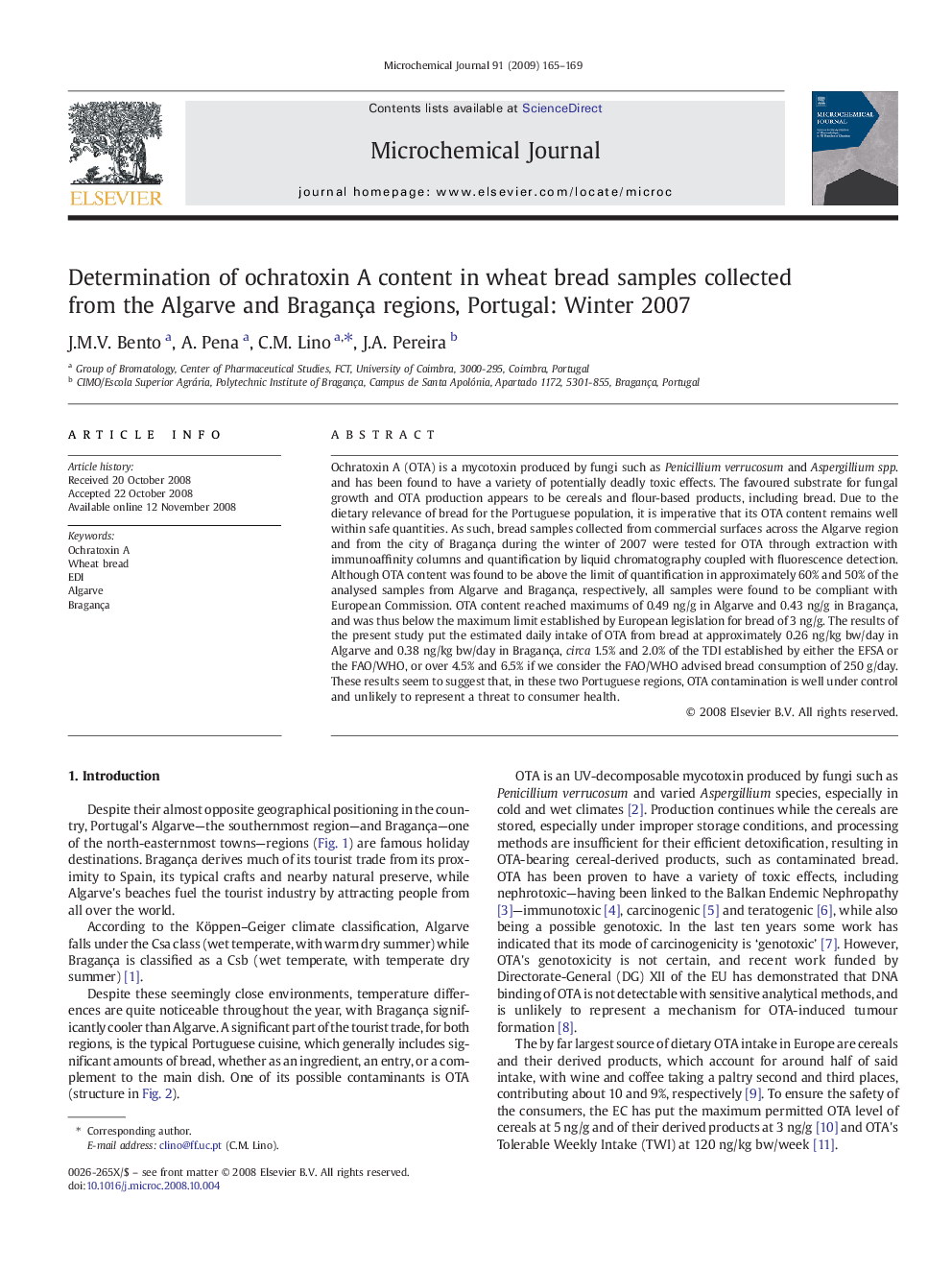| Article ID | Journal | Published Year | Pages | File Type |
|---|---|---|---|---|
| 1228155 | Microchemical Journal | 2009 | 5 Pages |
Ochratoxin A (OTA) is a mycotoxin produced by fungi such as Penicillium verrucosum and Aspergillium spp. and has been found to have a variety of potentially deadly toxic effects. The favoured substrate for fungal growth and OTA production appears to be cereals and flour-based products, including bread. Due to the dietary relevance of bread for the Portuguese population, it is imperative that its OTA content remains well within safe quantities. As such, bread samples collected from commercial surfaces across the Algarve region and from the city of Bragança during the winter of 2007 were tested for OTA through extraction with immunoaffinity columns and quantification by liquid chromatography coupled with fluorescence detection. Although OTA content was found to be above the limit of quantification in approximately 60% and 50% of the analysed samples from Algarve and Bragança, respectively, all samples were found to be compliant with European Commission. OTA content reached maximums of 0.49 ng/g in Algarve and 0.43 ng/g in Bragança, and was thus below the maximum limit established by European legislation for bread of 3 ng/g. The results of the present study put the estimated daily intake of OTA from bread at approximately 0.26 ng/kg bw/day in Algarve and 0.38 ng/kg bw/day in Bragança, circa 1.5% and 2.0% of the TDI established by either the EFSA or the FAO/WHO, or over 4.5% and 6.5% if we consider the FAO/WHO advised bread consumption of 250 g/day. These results seem to suggest that, in these two Portuguese regions, OTA contamination is well under control and unlikely to represent a threat to consumer health.
